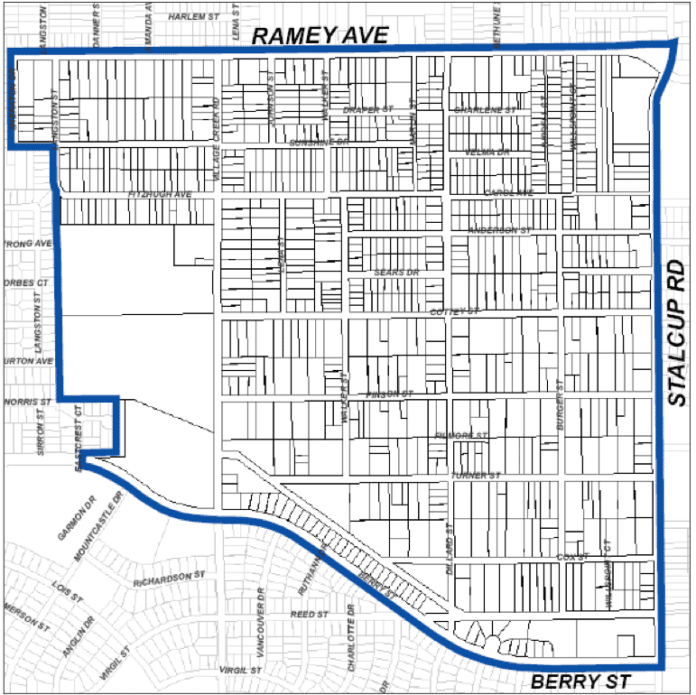Rather than removing the historic district that governs building design in the Stop Six area, the city’s Historic and Cultural Landmarks Commission is considering revising the district instead.
The Landmarks Commission met July 11 and was expected to vote on whether the historic district should be removed or not. After hearing public comment, the commission decided to continue working on the case for the next 30 days to see how the district’s design guidelines can be amended or how the district can be redrawn.
“There may be a way that we can do something that addresses the historical significance of the Stop Six neighborhood, while at the same time, removing any barriers that may or may not exist to economic development,” Commissioner Randle Howard said.
The district, known as Historic Stop Six: Sunrise Edition, spans approximately 392-acres roughly bounded by Ramey Avenue on the north, Stalcup Road on the east, Berry Street on the south and Langston Street on the west. If a developer wants to build within the district, the project must receive approval from the Landmarks Commission and abide by a set of written guidelines that govern design elements such as building materials, signage and landscaping. In addition, historic properties can be eligible for property tax incentives from the city.
According to City Councilwoman Gyna Bivens, the district’s design regulations discourage developers from bringing projects to the area. In the six years prior to the historic designation, the city reviewed 142 building permit applications, according to city data. In the nine years after the neighborhood was given a historic designation, the city reviewed 166 building permit applications.
Opponents of the historic designation’s removal, like Stop Six Sunrise Edition Neighborhood Association President Regina Blair, say removing the district will cause the area to lose its historic character. Blair suggested meeting with developers to find ways to revise the district’s design rules.
“This place matters and deserves equal opportunity to continue to develop despite the challenges it faces,” she said.
Justin Newhart, preservation program director for nonprofit historic preservation group Historic Fort Worth, Inc., said his organization doesn’t support the removal of the district either, mainly due to the properties losing their eligibility for historic tax incentives.
“Removing all of the local historic district overlay in one full swoop will stunt the economic revitalization potential of the Stop Six neighborhood, remove the property rights and protections for residents and endanger the architectural and cultural fabric of this historic neighborhood,” he said.
After the Landmarks Commission votes on the district, the case will next need to be approved by the Zoning Commission and ultimately the Fort Worth City Council.
The Stop Six area was originally called Cowanville but became known as “Stop Six” because it was the sixth stop of the Dallas-Fort Worth interurban train line, which operated from 1902-1934.






